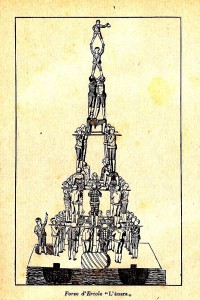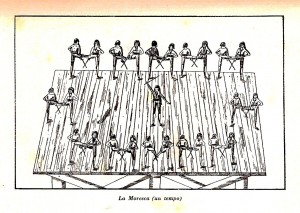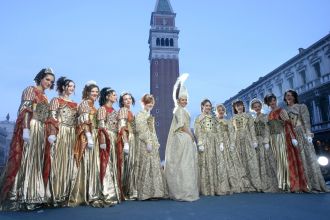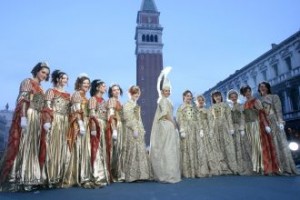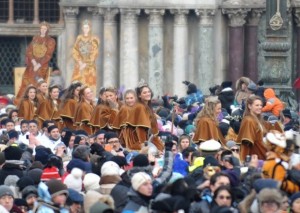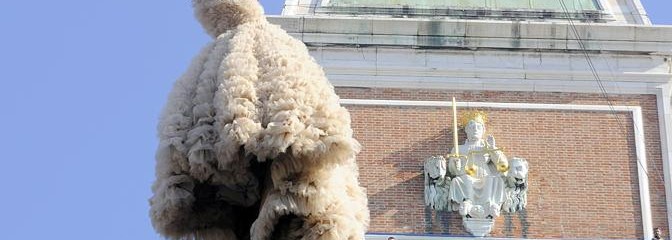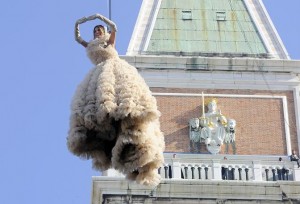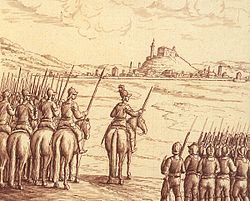Queste antiche tradizioni di carnevale si tenevano , nel Settecento, quando il Carnevale iniziava addirittura la prima domenica d’ottobre.
Caccia al toro
 La caccia al toro di solito iniziava dal primo giorno fino a l’ultima Domenica di Carnevale. L’inseguimento iniziava (ogni giorno in una sezione diversa della città) tutti i giorni della settimana tranne il Venerdì.Il fatto che si era possibile buttare nel canale in caso di pericolo, ha aiutato molto al fatto di non essere segnalati troppi incidenti mortali.La “cazza” era ammessa solo nel periodo di Carnevale, e consisteva più in un combattimento tra cani ed un toro che in una caccia come noi la intendiamo. La caccia finale si svolgeva solitamente in campo San Polo, con una dinamica simile a quella dell’omonima manifestazione a Pamplona in Spagna.Il toro, istigato dai cani, veniva trattenuto per le corna tramite funi dai “tiradori” che in tal modo provavano la loro forza ed abilità.( tradizioni)
La caccia al toro di solito iniziava dal primo giorno fino a l’ultima Domenica di Carnevale. L’inseguimento iniziava (ogni giorno in una sezione diversa della città) tutti i giorni della settimana tranne il Venerdì.Il fatto che si era possibile buttare nel canale in caso di pericolo, ha aiutato molto al fatto di non essere segnalati troppi incidenti mortali.La “cazza” era ammessa solo nel periodo di Carnevale, e consisteva più in un combattimento tra cani ed un toro che in una caccia come noi la intendiamo. La caccia finale si svolgeva solitamente in campo San Polo, con una dinamica simile a quella dell’omonima manifestazione a Pamplona in Spagna.Il toro, istigato dai cani, veniva trattenuto per le corna tramite funi dai “tiradori” che in tal modo provavano la loro forza ed abilità.( tradizioni)
Va notato che anche le donne si cimentavano abitualmente nella “caccia”.I tori che venivano sguinzagliati però, a differenza di quelli spagnoli che sono giovani, forti e 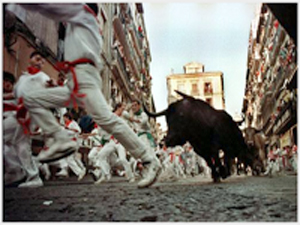 irascibili, erano animali vecchi e bolsi, e addirittura dei buoi.Liberi o legati con funi alle corna, i poveri animali, dopo aver subito maltrattamenti e lazzi dagli umani , venivano sbranati dai cani e macellati.
irascibili, erano animali vecchi e bolsi, e addirittura dei buoi.Liberi o legati con funi alle corna, i poveri animali, dopo aver subito maltrattamenti e lazzi dagli umani , venivano sbranati dai cani e macellati.
Ancora durante il Settecento, il giorno del giovedì grasso si continuava ad organizzare la “cazza” (caccia) del toro.
Antiche tradizioni ;La gatta
“Un gioco molto crudele, in voga fino al tardo settecento in occasione delle feste popolari prevalentemente in zona di Santa Maria Formosa. Consisteva nel legare una gatta in verticale su di una tavola, per mezzo di cinghie di cuoio che ne avvincessero l´addome lasciando libere le zampe. I concorrenti, a capo rasato e proteggendosi il viso con le mani, dovevano riuscire a uccidere il povero animale con il minor numero di testate possibile.”
Compagnie delle calze
Dalla metà del XV secolo fino alla fine del XVI secolo, l’organizzazione delle attività del festival era delegata alé ” compagnie delle calze”. Queste associazioni di giovani nobili veneziani si distinguevano per le loro multicolore calze. Ogni componente del gruppo aveva nomi fantasiosi inspirati dalle particolari virtù: gli Fioriti, gli Uniti e gli Concordi. Altri nomi derivano dai loro mestieri contemporanei zardineri, cortesi e sempiterni. Lo scopo di questi gruppi era quello di creare e preparare l’intrattenimento ed i spettacoli durante il carnevale. Tra il 1487 e il 1565 sono stati 23 diversi gruppi in tutta Venezia.
Antiche tradizioni ;L’Anguilla in Barile
“Questo gioco e rimasto in voga ancora e viene talvolta riproposto in qualche festa di quartiere. Consiste nel riuscire ad afferrare con i denti un´anguilla che nuota in una tinozza d´acqua annerita con l´inchiostro di seppia.”
Antiche tradizioni ;Bagordi, giostre e tornei
“Erano definiti bagordi le esibizioni o le finte battaglie tra cavalieri per la via, che offrivano
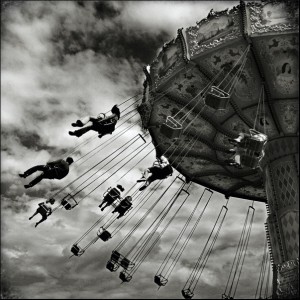 un discreto spettacolo. Talvolta invece si effettuavano giostre per mettere alla prova l’abilità dei cavalieri nell’uso della lancia: si dovevano infilare degli anelli in punta di lancia, staccandoli dai supporti. I tornei di tiro a segno con le balestre erano piuttosto comuni, ed avvenivano in particolari zone della città dette “bersagli”. Si ricordano anche dei finti assalti a finte fortezze costruite in legno per l’occasione oltre che a finte battaglie navali.”
un discreto spettacolo. Talvolta invece si effettuavano giostre per mettere alla prova l’abilità dei cavalieri nell’uso della lancia: si dovevano infilare degli anelli in punta di lancia, staccandoli dai supporti. I tornei di tiro a segno con le balestre erano piuttosto comuni, ed avvenivano in particolari zone della città dette “bersagli”. Si ricordano anche dei finti assalti a finte fortezze costruite in legno per l’occasione oltre che a finte battaglie navali.”
citati dal sito internet EL VENEXIAN
Oggi i festeggiamenti durano circa due settimane. In piazza S.Marco e nei campi vengono organizzati cortei storici, concerti, spettacoli vari e fuochi d’artificio.
Carnevale di Venezia 2014: info, programma e principali avvenimenti
Altri articoli: http://dipoco.altervista.org/altri-articoli/
Visita il mio sito: http://ginocosta.altervista.org
Su facebook https://www.facebook.com/venice.venezia.5


